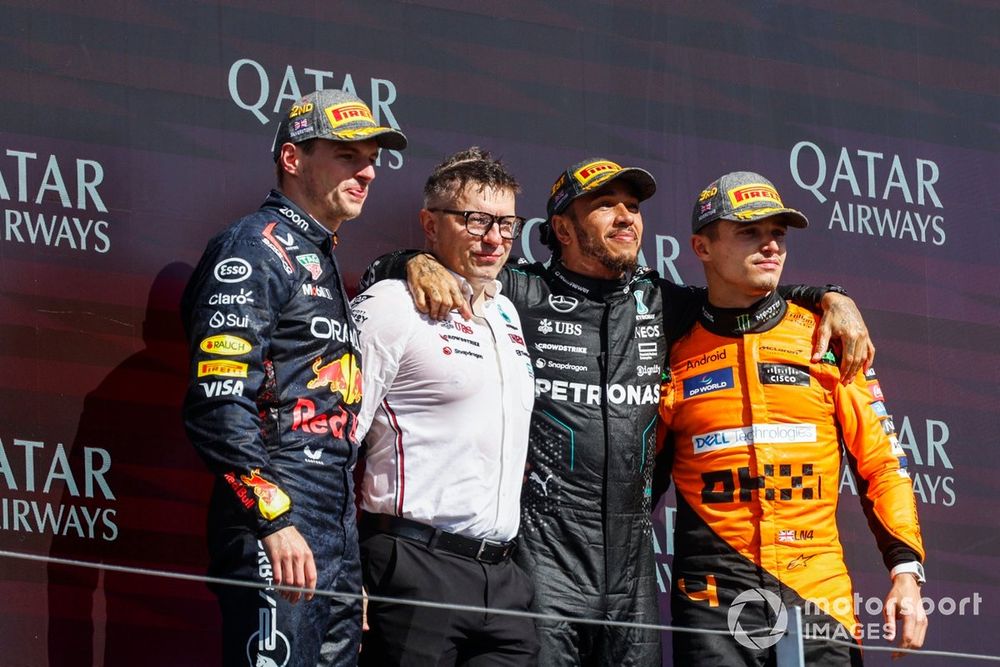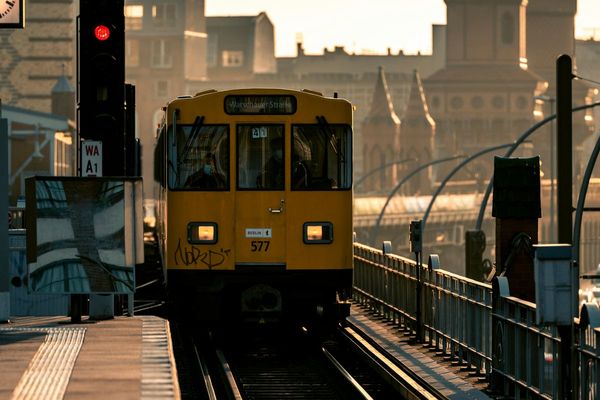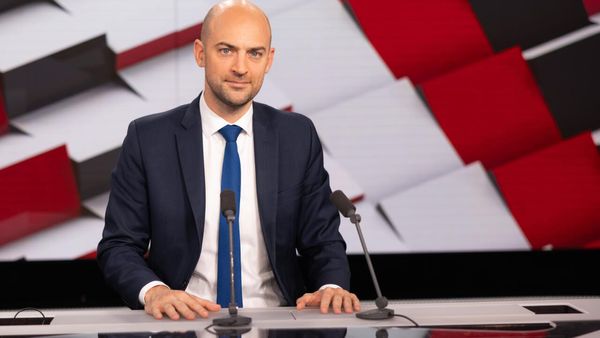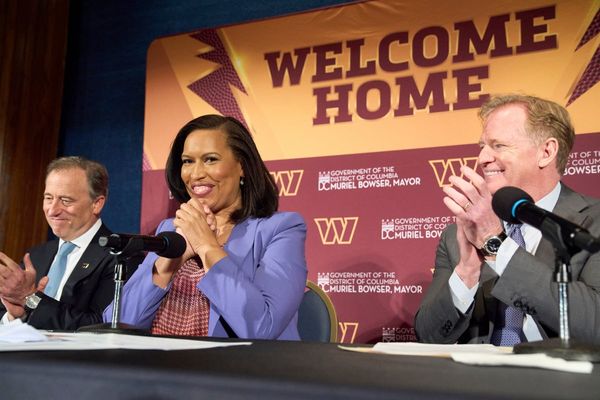Hamilton claimed an emotional victory at last weekend's British Grand Prix as it ended 945 days without a win in Formula 1.
It was the 104th victory of his career, with Hamilton's 103rd win coming 56 grands prix before at the 2021 Saudi Arabian GP - making it the ninth-biggest gap between victories in F1 history.
So the seven-time world champion shed tears at the chequered flag, after also claiming a record-extending ninth British GP win in front of his vibrant home crowd.
There was a lot of relief associated with the victory and the 39-year-old even admitted to having "days where I didn't feel like I was good enough", as Hamilton and his Mercedes team have largely struggled since the regulations changed in 2022.
So, what is different now from when Hamilton won the penultimate round of the 2021 season in Jeddah? Here are some examples.
Changes in F1 since Hamilton's last victory
Ground-effect cars
Much of Hamilton's success came during the turbo-hybrid era, which began in 2014 - a year after he made a masterful switch to Mercedes. That's because the German manufacturer adapted to the change the best and Hamilton pipped team-mate Nico Rosberg to a second world championship in 2014.
That started a dominant run for the Briton, who claimed five of the next six titles winning 62 grands prix during that time while losing the 2016 crown to Rosberg on the final day.
Hamilton was set for a record-breaking eighth championship in 2021, as he was leading the Abu Dhabi season finale until a controversial call by race director Michael Masi handed the advantage to title rival Max Verstappen, who went to win.
And that has remained Hamilton's final championship battle since, as the following season saw the reintroduction of ground-effect cars which had not been seen in F1 for 40 years.
Yet this was a regulation change that Mercedes failed to overcome, as the team's first ground effect car - the W13 - was very difficult to handle and often struggled with porpoising. This was a term not many knew at the time of Hamilton's Jeddah win either.

This resulted in just one win for Mercedes that season - George Russell at the Brazilian GP - as the team also adopted the no-sidepod design, which was the opposite of eventual world champions Red Bull.
It only got worse for Mercedes the following season, as it went winless for the first time in 12 years while Red Bull dominated winning 21 of 22 grands prix.
Not much initially improved in 2024 either, as Hamilton started his final season at Mercedes with no podiums in the opening nine grands prix, but mid-season upgrades improved the car leading to the Briton's first victory of the ground-effect era.
Changes to the F1 calendar
The 2021 F1 season featured a then-record-breaking 22 grands prix, as Qatar and Saudi Arabia made their debuts on the calendar while the Netherlands ended its 35-year absence from the series.
Although those tracks remain in F1 today, with the 2024 calendar only being two rounds bigger, it still looks vastly different to how it did three years ago. The United States, for example, only hosted one grand prix as Miami and Las Vegas have since joined Austin on the calendar as part of F1's plans to boost its popularity in America.
China also returned to the calendar during Hamilton's win drought, as before 2024 it last featured in 2019 due to the outbreak of COVID-19. The Briton has a record-breaking six victories at Shanghai International Circuit, but the 2024 grand prix did not go so well for him as he finished ninth despite standing on the podium in the sprint race.
Hamilton also has a good record at Suzuka with five victories, yet the Japanese GP was absent from the 2021 calendar due to the pandemic. It returned the following year, but Hamilton has yet to stand on the podium at Suzuka since its return.

Various circuits also dropped off the calendar during Hamilton's win drought, as 2021 was the last time Portugal, Russia and Turkey all hosted a grand prix. Portugal and Turkey originally returned as a one-off during the COVID-hit 2020 season but hosted one more race the following year, while F1 stopped visiting Russia after its invasion of Ukraine in February 2022.
F1 also visited France at the time of Hamilton's last victory before Silverstone, as Circuit Paul Ricard was part of the calendar until its contract expired at the end of 2022.
The order of the calendar has also changed significantly, as the Saudi Arabian GP is now in March rather than December, Baku is in September and not June, while Spa-Francorchamps no longer comes after the summer break.
Changes to the F1 grid
Hamilton's last two victories have come with a different team-mate, as Valtteri Bottas partnered him at Mercedes during 2021 but he joined Alfa Romeo - now Sauber - for 2022 after being replaced by George Russell who was previously at Williams.
Williams has actually changed its full line-up since then, as Nicholas Latifi is now a retired racing driver with the 29-year-old studying at the London Business School.
In fact, neither of the current Williams pair were on the grid at the time of Hamilton's win in Jeddah, as Alex Albon was Red Bull's reserve driver while Logan Sargeant was in F3.
Oscar Piastri and Zhou Guanyu have also made their F1 debuts since then, while veterans Nico Hulkenberg and Kevin Magnussen returned to the grid after a spell away.

Many others have since left F1 during that time too, as former Alfa Romeo driver Antonio Giovinazzi is now in the World Endurance Championship. The all-rookie line-up that Haas had in 2021 is no more, as Mick Schumacher and Nikita Mazepin, both of whom scored zero points that season, no longer compete in F1.
The number of world champions on the grid has also dropped over the past three years, as Kimi Raikkonen retired at the end of 2021 while 2022 was Sebastian Vettel's final season. This leaves Hamilton as F1's second oldest driver behind the 42-year-old Fernando Alonso, both of whom are two of three world champions on the 2024 grid alongside Verstappen.
Changes to F1 team management
The F1 team principal line-up has also featured a major overhaul over the last three years, as eight of the 10 constructors all have a new boss with only Red Bull's Christian Horner and Toto Wolff of Mercedes remaining from 2021.
Aston Martin was the first team to change its boss post-2021, as Mike Krack replaced Otmar Szafnauer in January 2022 with the former moving to Alpine a month later.
The next changes didn't happen until December of that year, as Frederic Vasseur left Alfa Romeo for Ferrari after Mattia Binotto left and Andrea Stella replaced Andreas Seidl at McLaren.
Alfa Romeo and Williams also changed their team boss during that off-season, as James Vowles left his motorsport strategy director role at Mercedes to replace Jost Capito at the British squad in January 2023, while the Hinwil-based outfit opted for a less conventional set-up.

It had just appointed Seidl as its CEO and instead of hiring a traditional team principal, the German began overseeing a management structure consisting of Alessandro Alunni Bravi, Xevi Pujolar, Beat Zehnder, with Bravo acting as its 'team representative'.
Just four months after those appointments, AlphaTauri - now RB - announced that its long-serving Franz Tost was to be replaced by Ferrari's Laurent Mekies at the end of 2023. There was then more change at Alpine, as Szafnauer left by "mutual agreement" in July 2023 and was replaced by Bruno Famin.
The 2023/24 off-season was a bit quieter though, as Haas was the only team to change its team principal with Guenther Steiner being replaced by Ayao Komatsu after the American squad finished bottom of the 2023 standings.
So, there were a lot of management reshuffles during Hamilton's win drought and the seven-time world champion will also have a new boss soon as he is joining Ferrari in 2025.
Changes outside of F1 since Hamilton's last victory
It's not only F1 that changed during Hamilton's win drought, as much is different elsewhere.
There have been four UK Prime Ministers
When Hamilton won the 2021 Saudi Arabian GP, Boris Johnson was prime minister of the United Kingdom after the Conservatives claimed a landslide victory over Jeremy Corbyn's Labour at the 2019 general election.
But, in September 2022 Johnson was ousted as leader of the Tory party after a heavy defeat in the June by-elections amid various scandals like Partygate. So, the Conservatives held its own leadership election and Liz Truss succeeded Johnson as prime minister but only lasted for 50 days - the second shortest tenure in history after Arthur Wellesley (23 days) in 1834.
The man she beat in the leadership election, Rishi Sunak, therefore became the third prime minister of 2022 and took the keys of 10 Downing Street just two days after Hamilton claimed second at the United States GP.

Sunak's tenure lasted much longer than his predecessor, as the 44-year-old was in office for 1y255d before comfortably losing the 2024 general election to Labour's Keir Starmer, who made it four prime ministers since Hamilton last won a race.
But the tally ended at four, as Labour was voted in just two days before Hamilton won the British GP to cap off an eventful week for the UK.
A change in the UK Monarchy
The UK also had a different monarch when Hamilton won in Jeddah, as Queen Elizabeth II was still in charge.
But, amid all the prime minister changes in 2022, the Queen passed away on 8 September which ended her 70-year reign - the longest in history.
Hamilton, who finished fourth at the Dutch GP just four days earlier, paid tribute to the Queen via social media describing her as "an iconic leader, an inspiration and a reassuring presence for most, if not all, of our lives".
The two had actually met on several occasions, as the Queen awarded Hamilton his MBE in 2009 which was 12 years before he received a knighthood by her son and successor King Charles III.
Hamilton became a part-owner of the NFL's Denver Broncos
Hamilton often escapes to the Colorado mountains during his off-season and the American state is home to the NFL's Denver Broncos.

In August 2022, Hamilton joined the ownership group of the three-time Super Bowl champions who had just been bought by the Walton-Penner family for $4.65b.
When the news was announced, Hamilton said: "Excited to join an incredible group of owners and become a part of the Broncos story! Honoured to work with a world-class team and serve as an example of the value of more diverse leadership across all sports."
He has since visited Denver to cheer on his team, but Hamilton's support has not brought success on the pitch as the last playoff appearance for the Broncos came in 2015 when it won Super Bowl 50.







